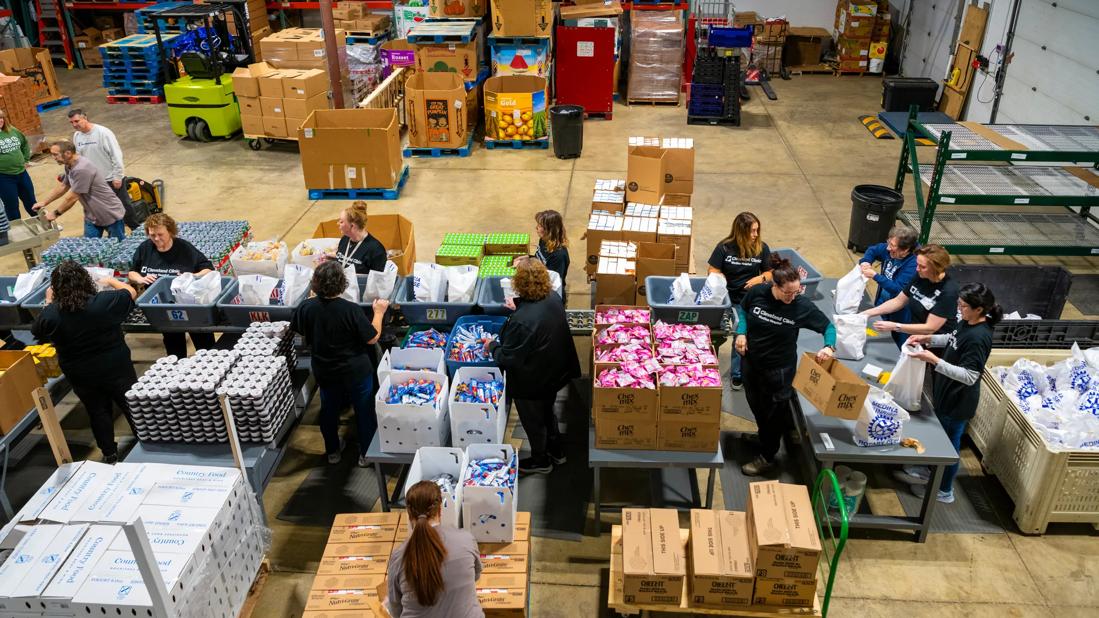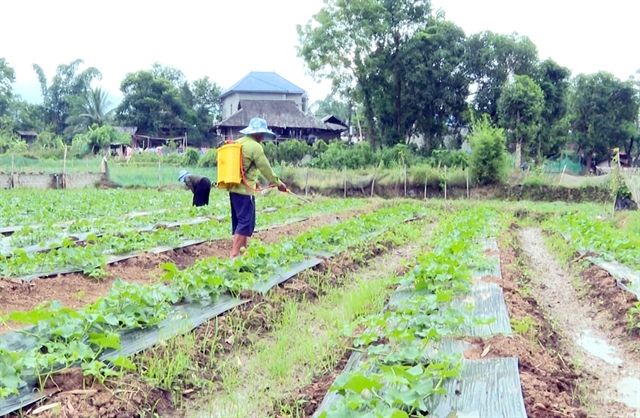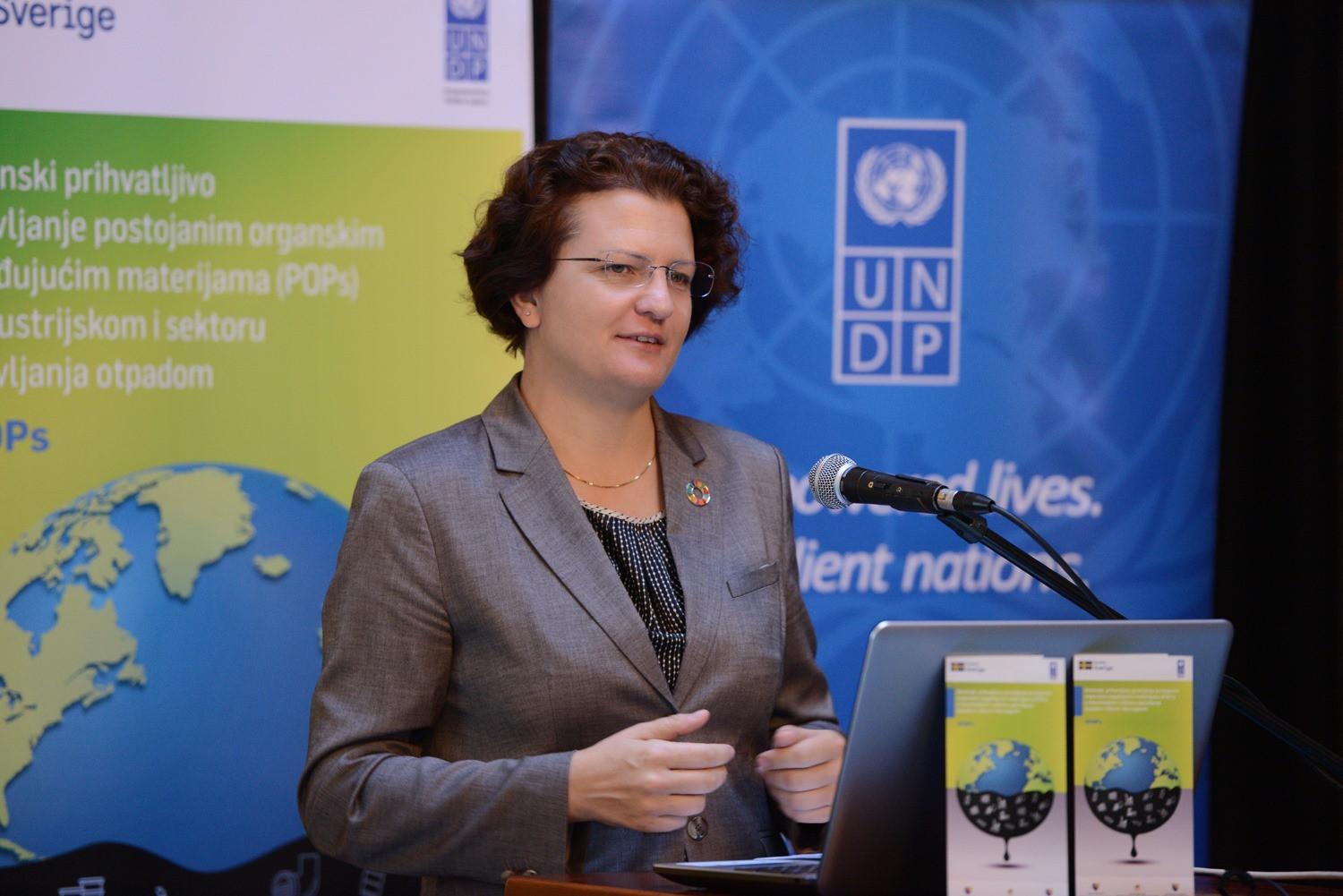Where to turn in Jackson when you’re above the poverty line, but still struggling – FOX 47 News

Report on Economic Instability and Sustainable Development Goal Alignment in Jackson, Michigan
Introduction: The ALICE Population and SDG 1 (No Poverty)
A United Way study reveals a significant challenge to achieving SDG 1 (No Poverty) in Jackson, Michigan. A large segment of the population, identified by the acronym ALICE (Asset Limited, Income Constrained, Employed), earns income above the federal poverty line yet cannot afford basic household necessities. This demographic represents a critical gap in social safety nets, as they often do not qualify for traditional government assistance, complicating efforts to eradicate poverty in all its forms.
Statistical Analysis and Local Impact
The economic strain on the ALICE population underscores challenges related to multiple Sustainable Development Goals, including SDG 8 (Decent Work and Economic Growth) and SDG 10 (Reduced Inequalities).
- Income Threshold: The ALICE income threshold for a household with one adult and one school-aged child in Michigan is approximately $41,500 annually.
- Prevalence in Jackson: In the city of Jackson, 64% of households fall below this ALICE threshold. This figure is more than 20 percentage points higher than the national average, indicating a severe local challenge to economic stability and sustainable community development as outlined in SDG 11 (Sustainable Cities and Communities).
Demographic Disparities and Social Equity
The ALICE condition disproportionately affects specific demographic groups, highlighting a critical need to address SDG 5 (Gender Equality) and SDG 10 (Reduced Inequalities).
- Single woman-led households are more likely to be categorized as ALICE.
- Minority households are also disproportionately affected by income constraints despite being employed.
According to Ebone Young, Associate Director of Community Impact at United Way of Jackson, the ALICE population is ubiquitous, comprising friends, neighbors, and coworkers across urban and rural areas.
Community-Based Support Systems and Contribution to SDGs
Centralized Information and Direct Assistance
In response to these challenges, several community-based programs are in place to provide support, directly contributing to local efforts to achieve the SDGs. These resources aim to connect residents with essential services for food, shelter, health, and employment.
- 211 Service: A primary resource for individuals to access information on a wide range of support programs, from emergency food and shelter to family and work support.
- United Way Program Assistance Center: This internal program offers direct utility assistance, addressing a fundamental need for stable and affordable energy.
- Job Star Program: This initiative supports employers in better assisting their employees, fostering a more stable work environment and contributing to the principles of SDG 8 (Decent Work and Economic Growth).
State and Local Relief Programs
A variety of specific programs are available to provide financial relief and support to ALICE households. These initiatives are crucial for mitigating economic hardship and promoting greater financial security.
- State Emergency Relief
- Michigan Energy Assistance Program
- Home Heating Credit
- United Way Energy Help
Which SDGs are addressed or connected to the issues highlighted in the article?
SDG 1: No Poverty
- The article’s central theme is the “ALICE” population—Asset Limited, Income Constrained, Employed. These are individuals who, despite being employed and officially above the poverty line, are “struggling to make ends meet and for those basics.” This directly addresses the goal of ending poverty in all its forms, extending beyond traditional poverty metrics.
SDG 5: Gender Equality
- The article explicitly states that the ALICE situation “tends to disproportionately affect single woman-led and minority households.” This highlights a gender-based dimension of economic vulnerability, connecting the issue to the goal of achieving gender equality and empowering all women and girls.
SDG 8: Decent Work and Economic Growth
- The “E” in ALICE stands for “Employed.” The article discusses a segment of the population that has a job but remains “income constrained.” This points to a lack of decent work that provides a living wage. The mention of the “Job Star program, which is supporting employers so that they can better support their employees,” further links the issue to improving work conditions and economic well-being.
SDG 10: Reduced Inequalities
- The article focuses on a specific group that falls into an inequality gap: they earn too much to qualify for government assistance but not enough to be financially stable. The statement that ALICE “disproportionately affect[s] single woman-led and minority households” directly addresses inequalities based on gender and race within a country.
SDG 11: Sustainable Cities and Communities
- The issue is framed within a specific geographic context, the “city of Jackson,” where “64% of households fall below that threshold.” The solutions discussed, such as access to information on “food, shelter, health services,” and “utility assistance,” are essential basic services for creating inclusive and sustainable communities.
What specific targets under those SDGs can be identified based on the article’s content?
SDG 1: No Poverty
- Target 1.2: By 2030, reduce at least by half the proportion of men, women and children of all ages living in poverty in all its dimensions according to national definitions.
- The article defines a specific dimension of poverty with the “ALICE” threshold, which is a “national definition” created by United Way. The focus on the 64% of households in Jackson below this line directly relates to measuring and reducing this form of poverty.
- Target 1.3: Implement nationally appropriate social protection systems and measures for all… and by 2030 achieve substantial coverage of the poor and the vulnerable.
- The article highlights a gap in social protection, noting that ALICE individuals often “don’t qualify for government assistance.” The programs mentioned, such as “State Emergency Relief” and those offered by United Way, represent efforts to create social protection measures for this vulnerable group.
SDG 5: Gender Equality
- Target 5.4: Recognize and value unpaid care and domestic work through the provision of public services, infrastructure and social protection policies.
- The article’s mention of “single woman-led” households being disproportionately affected points to the economic vulnerability often faced by women, which can be linked to caregiving roles. The support programs providing “utility assistance,” “shelter,” and “family support” are forms of social protection policies crucial for these households.
SDG 8: Decent Work and Economic Growth
- Target 8.5: By 2030, achieve full and productive employment and decent work for all women and men… and equal pay for work of equal value.
- The core concept of ALICE—being employed yet unable to afford basics—directly challenges the idea of “decent work.” The problem is not unemployment, but under-compensated employment. The “Job Star program” aims to help employers better support employees, which is an action toward making work more decent and sustainable.
SDG 10: Reduced Inequalities
- Target 10.2: By 2030, empower and promote the social, economic and political inclusion of all, irrespective of… sex, race, ethnicity… or other status.
- The article identifies the economic exclusion of the ALICE population. By stating that “single woman-led and minority households” are disproportionately affected, it directly addresses the need to reduce inequalities based on sex and race.
SDG 11: Sustainable Cities and Communities
- Target 11.1: By 2030, ensure access for all to adequate, safe and affordable housing and basic services.
- The article mentions that ALICE individuals struggle to afford “the basics.” The support systems it highlights, such as 211 and United Way, provide information and assistance for “food, shelter, health services,” and “utility assistance,” which are the very basic services this target aims to secure for all.
Are there any indicators mentioned or implied in the article that can be used to measure progress towards the identified targets?
SDG 1: No Poverty
- Indicator for Target 1.2: The article provides a specific, measurable indicator: the proportion of the population living below the ALICE threshold. It states, “in the city of Jackson, United Way officials say 64% of households fall below that threshold.” The “ALICE income benchmark for one adult and one school-aged child in Michigan is about $41,500 per year,” providing a clear monetary line.
- Indicator for Target 1.3: An implied indicator is the coverage gap in social protection. The statement that ALICE households “don’t qualify for government assistance” implies a low proportion of this vulnerable population is covered by official systems. The number of people accessing alternative programs like “State Emergency Relief” or “United Way Energy Help” could serve as an indicator of progress in closing this gap.
SDG 5 & 10: Gender Equality & Reduced Inequalities
- Indicator for Targets 5.4 & 10.2: A qualitative indicator is mentioned directly: the disproportionate impact on specific demographics. The article states that ALICE “tends to disproportionately affect single woman-led and minority households.” A quantitative measure would be the percentage of ALICE households that are led by single women or minorities compared to their percentage in the general population.
SDG 8: Decent Work and Economic Growth
- Indicator for Target 8.5: The existence and size of the ALICE population itself serves as an indicator of the prevalence of non-decent work. The “Proportion of employed persons living below a financial stability threshold (ALICE)” is a powerful metric implied by the article.
SDG 11: Sustainable Cities and Communities
- Indicator for Target 11.1: An implied indicator is the number of people accessing support for basic services. The article lists specific programs like the “Michigan Energy Assistance Program” and “Home Heating Credit.” The number of households that apply for and receive this assistance would be a direct indicator of the need for, and progress toward, ensuring access to basic services.
Table of SDGs, Targets, and Indicators
| SDGs | Targets | Indicators Identified in the Article |
|---|---|---|
| SDG 1: No Poverty | 1.2: Reduce poverty in all its dimensions according to national definitions. | Proportion of households below the ALICE threshold (stated as 64% in Jackson). The ALICE income benchmark ($41,500/year for a specific household). |
| SDG 1: No Poverty | 1.3: Implement social protection systems for the poor and vulnerable. | The gap in coverage, where ALICE individuals “don’t qualify for government assistance.” The existence of alternative support programs (e.g., State Emergency Relief). |
| SDG 5: Gender Equality | 5.4: Recognize and value unpaid care and domestic work through social protection policies. | Qualitative indicator: The disproportionate effect of being ALICE on “single woman-led” households. |
| SDG 8: Decent Work and Economic Growth | 8.5: Achieve full and productive employment and decent work for all. | The existence of an “employed” population that is “income constrained” (the ALICE population itself is an indicator of non-decent work). |
| SDG 10: Reduced Inequalities | 10.2: Empower and promote the social, economic inclusion of all, irrespective of sex, race, etc. | Qualitative indicator: The disproportionate effect of being ALICE on “minority households.” |
| SDG 11: Sustainable Cities and Communities | 11.1: Ensure access for all to adequate, safe and affordable housing and basic services. | The need for and provision of assistance for “food, shelter, health services,” and “utility assistance” through various named programs. |
Source: fox47news.com

What is Your Reaction?
 Like
0
Like
0
 Dislike
0
Dislike
0
 Love
0
Love
0
 Funny
0
Funny
0
 Angry
0
Angry
0
 Sad
0
Sad
0
 Wow
0
Wow
0















































































